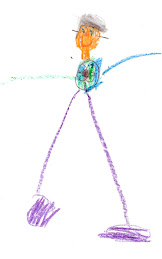We’re finally getting some snow, and for most of us that’s a
good thing. Snow is pretty and clean. It is brilliant in the sunlight and
brings some light to the darkness of night. And kids like to go sledding in it and make snowmen and snow forts.
All right. That’s enough of the good stuff about snow. The
bad part is trying to maneuver in it, especially in a vehicle. I don’t know
about you, but I say 'thank you' to the road crews every single time I hear/see
them on my street. I don’t know when they sleep, because it’s usually in the
dark of night that I hear them rumble down the street. On the occasion when
they can’t get out or if we live in 'the country,' we learn just what it’s like to live in the Midwest without
road crews.
Most snow plows not only move the snow to the side of the
road, but they also sprinkle something on the plowed area. We usually think of
this as ‘salt,’ although there are many other things that can be and are spread
on streets to make them more safe.
Common salt (sodium chloride) is the cheapest and most
available substance. It works by breaking the bond of the ice to the pavement
or melt the snow by lowering the freezing point of water. The problem with salt
is that it is corrosive to most pavement surfaces; it runs off the streets into
lawns and watersheds, and it is only effective when the pavement temperature is
15-20°or above.
Sand or ground-up ashes are sometimes spread on roadways. It
is cheap and it works at temperatures when salt will not, but it tends to clog
up drainage systems, and it does not melt snow and ice.
Sometimes there is an area where salt must be restricted. In
these areas the street departments can use something called premix (a
combination of sodium chloride and calcium chloride). It’s not as harmful to
roadways and it works well at lower temperatures, but it’s more expensive, and
it has to be kept dry.
In recent years departments have been experimenting with
pre-treatment solutions. Two chemicals can be used: liquid calcium chloride and
liquid magnesium chloride. Both work at really low temperatures and are less
harmful to the environment, but their use must be timed correctly.
Incidentally, snow plow drivers do NOT delight in burying
your driveway entrance in a mountain of snow. If they could, they would leave
every driveway clear, but this is not a choice they can make. Your best bet is
to shovel out your drive after the plow has gone by. Shovel the snow to the
right of your driveway as you face the street (or in the direction of travel).
And yes, as long as there is snow on the street, the plows will continue moving
it to the side…and into your driveway.


No comments:
Post a Comment